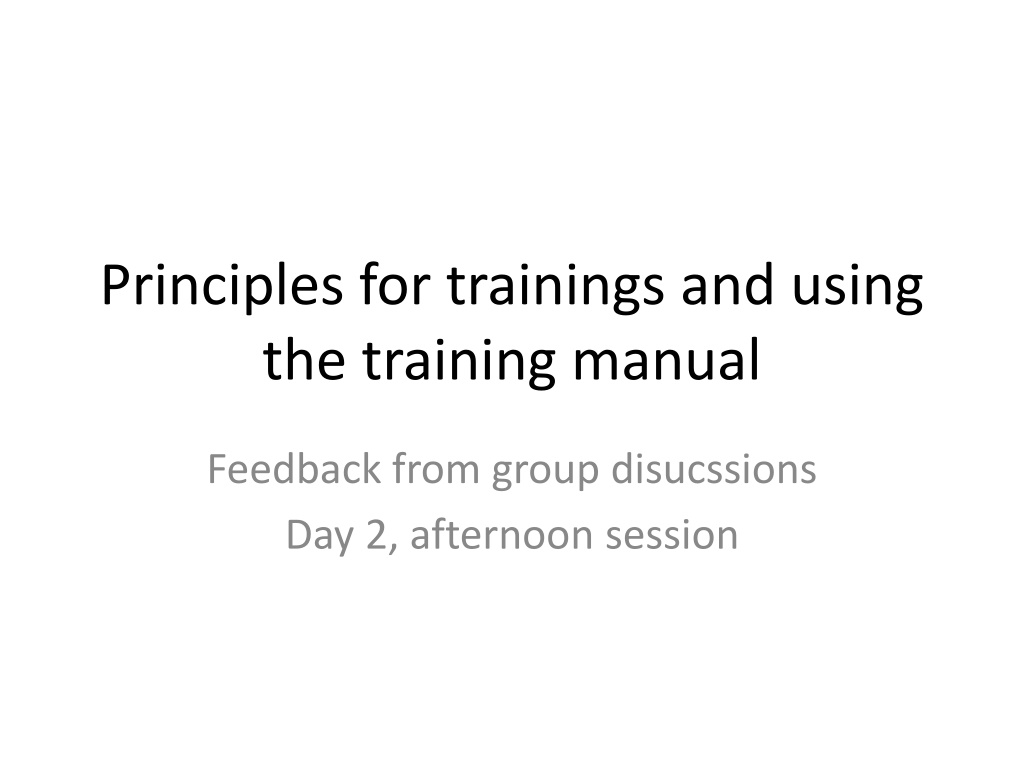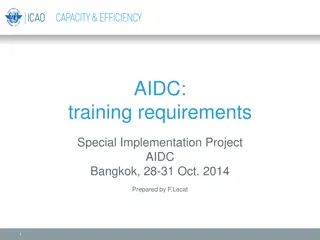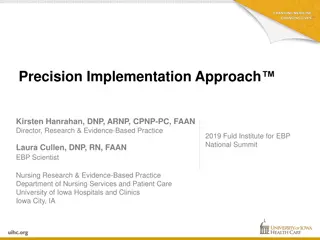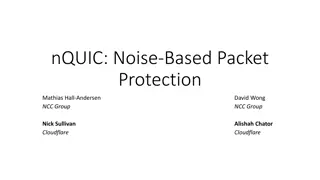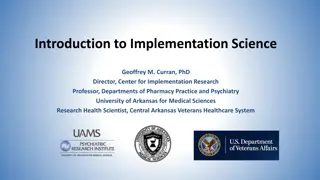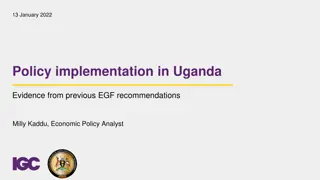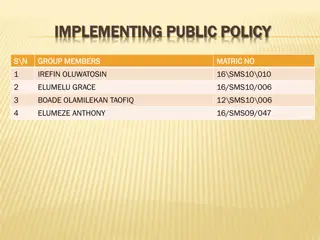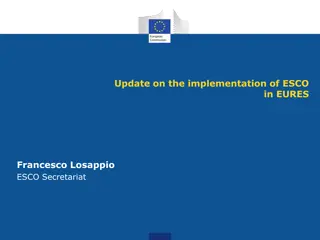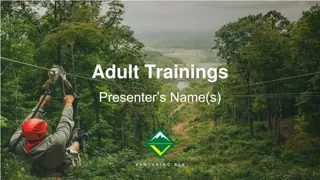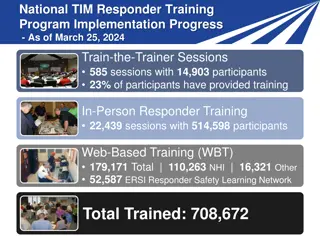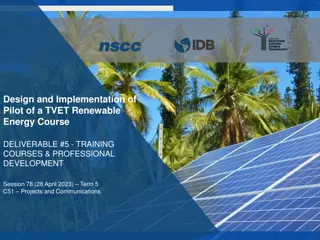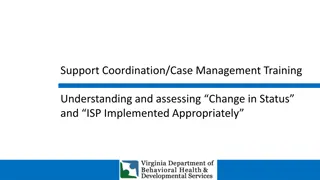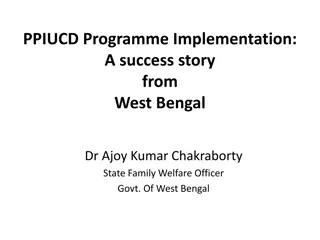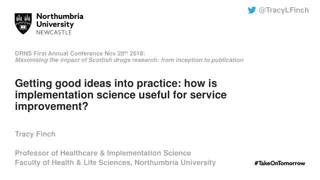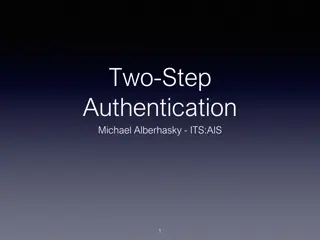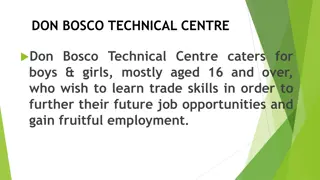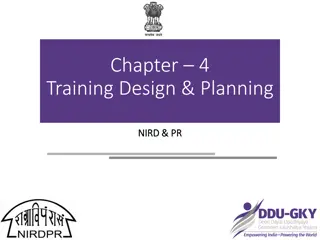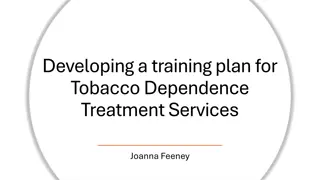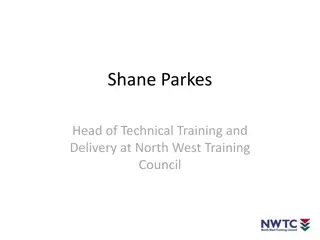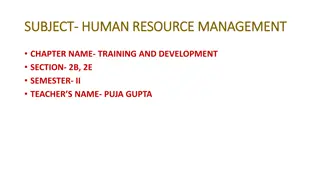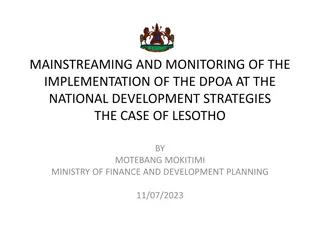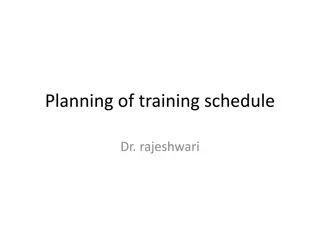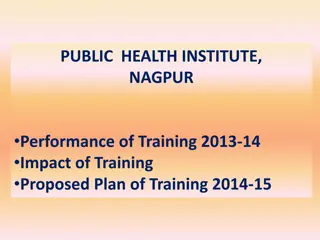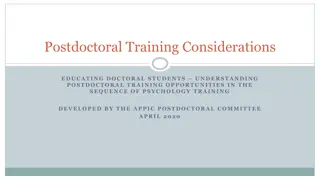Challenges and Strategies in Training Manual Implementation
Key challenges in training manual implementation include capturing relevant target audiences, attracting multidisciplinary participation, and securing investment. Strategies involve identifying champions, engaging policy makers, and cultivating a diverse and knowledgeable training team to address resistances and lack of resources.
- Training challenges
- Manual implementation
- Strategies
- Stakeholder engagement
- Multidisciplinary approach
Download Presentation

Please find below an Image/Link to download the presentation.
The content on the website is provided AS IS for your information and personal use only. It may not be sold, licensed, or shared on other websites without obtaining consent from the author. Download presentation by click this link. If you encounter any issues during the download, it is possible that the publisher has removed the file from their server.
E N D
Presentation Transcript
Principles for trainings and using the training manual Feedback from group disucssions Day 2, afternoon session
Key challenges Group 1 Principles for trainings and using the training manual HiAP terminology Capturing relevant target audience Representatives from units/sectors can be lonely if they trained alone. Therefore may wish to find resources to have more than one person per stakeholder group. Also may address high-turnover of staff and loss of investment. Weak structures Attracting other sectors and be multidisciplinary Low investment in mid-career training Case studies specific to the country context
Key challenges Group 2 Identifying issue of mutual strategic interest Resources Conducting stakeholder mapping Knowing about priorities of relevant sectors Training team Resources identifying champions Skills, experience and interdisciplinary team members Target audience Resources identifying relevant trainers Get buy-in from policy makers to facilitate engagement of technical staff Technocrats remain despite political changes Stakeholders, including NGOs, private sector Description/frameing of training
Key challenges Group 3 Target audience to trainers or actors Resistance to something new Not to repeat, go into unnecessary detail Importance of having ice-breakers Encourage linkages with previous experiences and expertise Lack of information on context or participants National, regional and local champions/informants Lack of resources E.g. UN, UNCT, private sector, In kind support as well as financial support New, innovative resource sources Trainer must really have HiAP skills, knowledge, experiences. Be able to field and respond to difficult questions.
Key challenges Group 4 Lack of interest People getting trained being lonely when go back to country context Lack of authority secure from higher levels Choice and level of influence of participants Human resources develop small pool of people to train and facilitate issues
Key challenges Group 5 Champion at national, regional and local level Context and power Decentralised --- centralised National --- regional --- local Urban --- rural Universal --- individual values and coverage Public --- private Data, case studies, examples relevant to audience Non-health professionals and sectors (need basic level of health literacy, acronyms, etc) Resources Advocates and leaders (in/out health, in/out system) Case studies, information quality control needed Pilot and testing and lessons learned How to use social networks and other networks (WHO, UN, mayors, parliamentary unions, civil society and NGOs, interest groups) Collaborative platform need combination of online, face-to-face, etc.
Practical next steps USB stick/CD/platform of all resources referenced in manual Translation of HIAP manual How this group will stay in touch, be network? Google group? ActionSDH discussion forum (can post questions) Longer term next steps Mapping of key health issues and their causes
Principles for trainings and using the training manual Health is societal goal; social impact on health Social justice and equity as marker of societal success Data, evidence, case studies, experiences (historical, personal, etc) local, regional context Low, middle and high income country contexts Ability to engage with other sectors In-depth knowledge of HiAP training manual; adaptation to context & audience Listen Respect diversity and needs, be open-minded, non-judgemental Be realistic is setting framing and objectives Allow time and space for discussion, internalisation and self-reflection Respecting systems within which participants work (incl. budgetary resources) Inclusive and safe spaces Ensuring confidentiality Learning for action, adult training (guidance on this useful) Cultural competency and sensibility Sense of humour (culturally appropriate) Resources in relevant languages Training for action; follow-up and support (after training) DRAFT 1
Categories for principles Social justice values Training team profile and skills Adult learning approaches Materials and resources
Principles for trainings and using the training manual DRAFT 2 Overarching social justice values Health is societal goal; social impact on health Social justice and equity as marker of societal success REWORD: Respect diversity and needs, be open-minded, non-judgemental Training team profiles, competencies and skills [Split into subcategories: General training skills; specific expertise &competencies] Good interpersonal, listening and relationship building skills In-depth familiarity of HiAP training manual content and purpose, and able to adapt it to specific (training) context and audience Respect diversity and needs, be open-minded, non-judgemental Cultural competency and sensibility Sense of humour (culturally appropriate) [NEW: Working across sectors] Follow-up and support (after training) appropriate to development of training programmes. FACILITATE / FACILITATORS wording [NEW: diplomacy and negotiation competencies]
Principles for trainings and using the training manual Learning by doing based on adult learning approaches Be realistic is setting framing and objectives and vision Provide inclusive and safe spaces for learning and dialogue Allow time and space for discussion, internalisation and self-reflection of trainers and participants Respecting systems within which participants work (incl. resources) [NEW: Respect and equality between trainers and trainees;] DRAFT 2 Support materials and resources Data, evidence, case studies, experiences (historical, personal, etc.) Local, regional and cultural context Low, middle and high income country contexts Resources in relevant languages Guidance on adult learning approaches
Principles for trainings and using the training manual DRAFT 3 suggestions by Tori Overarching social justice values Social justice and equity are markers of societal success. Health is a societal goal, and the social impact on health should be recognized. [REWORD: Respect diversity and needs, be open-minded, non-judgemental]. [SUGGESTION: A human rights approach should underpin all training initiatives; including non-discrimination and equality, respect for diversity and cultural appropriateness.] Training team profiles, competencies and skills --- Specific expertise and competencies In-depth familiarity of HiAP training manual content and purpose, and ability to adapt it to specific training contexts and audiences [NEW: Expertise, experience and competencies related to HiAP and working intersectorally, and to diplomacy and negotiation] Ability to Follow-up facilitate and support, as appropriate, training facilitators and the development of training programmes after the training. [Carmel I m not sure I fully understood the change requested by Timo here, so please check this] --- Values for an enabling learning environment Good interpersonal, listening and relationship building skills Respect for diversity and differential needs, being open-minded and non-judgemental Cultural competency and sensibility Making learning fun and having a sense of humour (culturally appropriate)
Principles for trainings and using the training manual Learning by doing based on adult learning approaches Be realistic is setting framing and objectives within longer-term vision Respecting systems within which participants work (including available resources) Provide inclusive and safe spaces for learning, sharing and dialogue Allow time and space for discussion, internalization of learning and self-reflection of trainers and participants [NEW: Respect and equality between trainers and trainees and recognise and draw from pre-existing knowledge and expertise] Support materials and resources Data, evidence, case studies and experiences (historical, personal, etc.) Local, regional and cultural context Low, middle and high income country contexts Resources in relevant languages Guidance on adult learning approaches DRAFT 3 suggestions by Tori
